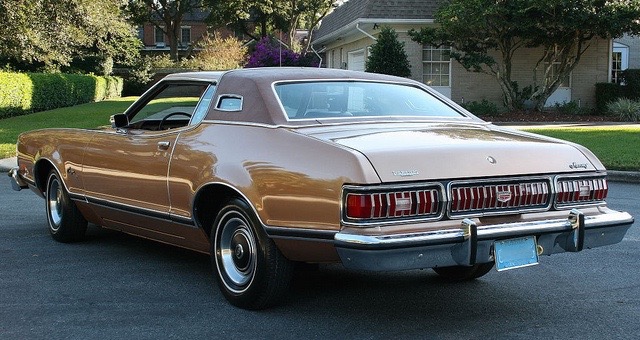The prewar notion that streamlined-looking fastback styling was the wave of the future was largely abandoned, though every GM division did market some fastback models for 1949. Chrysler did the same, but on a much smaller scale. Plymouth built an entry-level fastback 2-door sedan, and Dodge had a semi-fastback similar in character to Mercury's '49 roofline.
And there was even more Chrysler experimentation in Dodge's Wayfarer line. This experimentation required extra tooling expenses for what turned out to be fairly low-volume cars. In those days, Chrysler Corporation ranked ahead of Ford in sales and was doing well financially, so its management must have thought that the risk of losing some money to gain market knowledge was worthwhile.
Let's take a look at Dodge's Wayfarer line. Color images are of cars that were on Internet for-sale sites.
Let's first view a 1949 mainstream Dodge Coronet 4-door sedan to provide context. The sun visor above the windshield was a popular accessory in the late 1940s and early 50s.
This is a 1949 Wayfarer business coupe. Business coupes had only one bench seat, but this allowed for larger trunk space for hauling business-related items. That body style was dropped early in the 1950s.
And here is the Wayfarer Roadster, essentially a convertible version of the business coupe. Only a small proportion were true roadsters with side curtains instead of roll-up windows -- most Dodge "Roadsters" were built with the latter.
Front three-quarter views of '49 Dodge Wayfarer sedans.
A 1950 Mercury showing its semi-fastback / semi- bustle-back styling. The Dodge's bustle-back is smaller and gives the impression of being mostly a fastback.
Rear view of a '49 Wayfarer. Compare this to the 1949 Plymouth P-17 fastback below.
This car and the Dodges shown above used the same roof tooling, the main difference is that the Dodge's B-pillar slants and the Plymouth's is vertical. The Dodge bustle-back is due to a 4-inch longer wheelbase and 14 inches (35 cm) more overall length. This added length would have required a different, more expensive fastback roof shape towards the rear, so the cheaper semi-fastback option was taken.
Finally, the Dodge Wayfarer sedan's fastback competition, a 1949 Pontiac Streamliner 2-door. Much sleeker than the Dodge, but perhaps with a bit less trunk space -- a problem that led GM to dropping fastbacks after the 1952 model year.











































